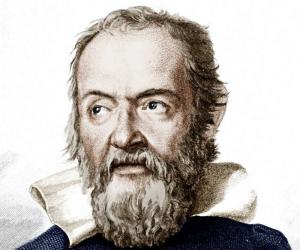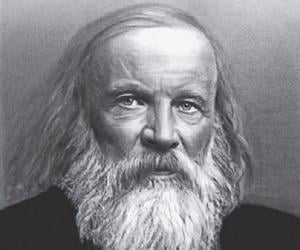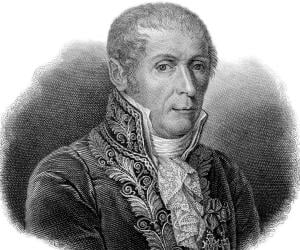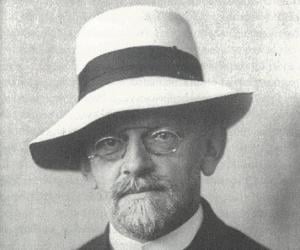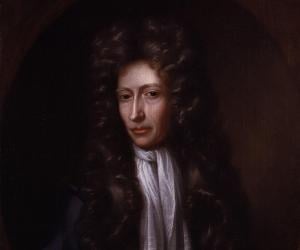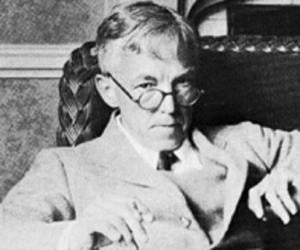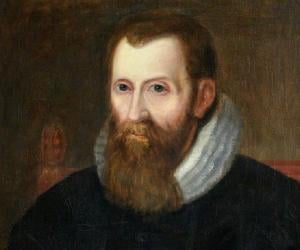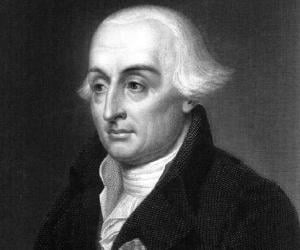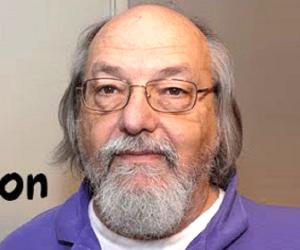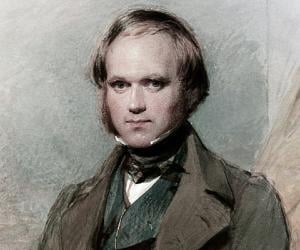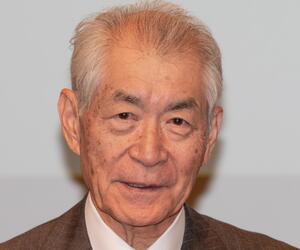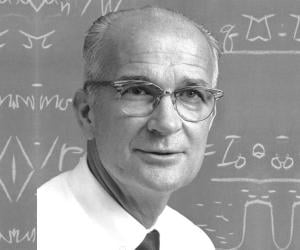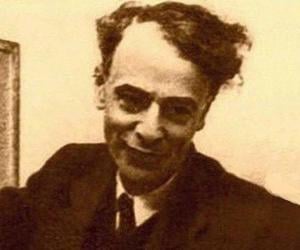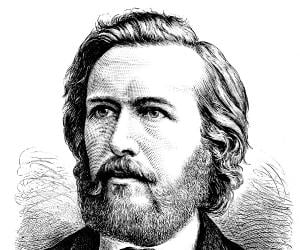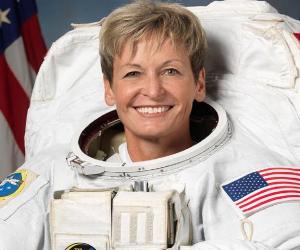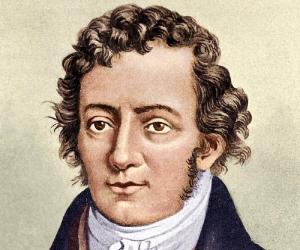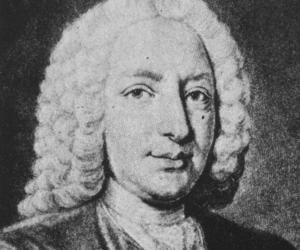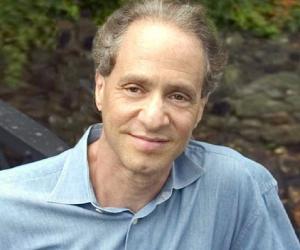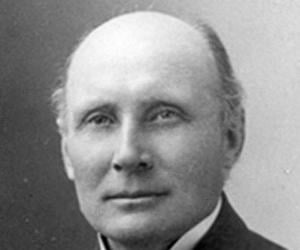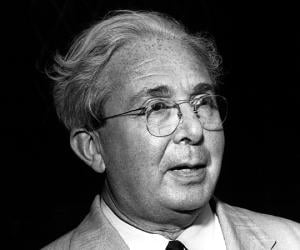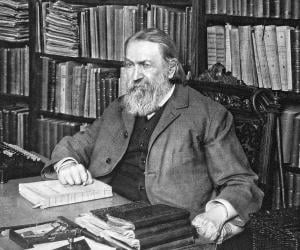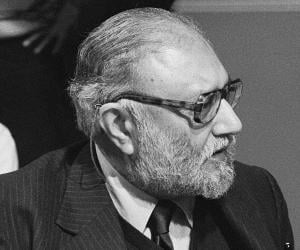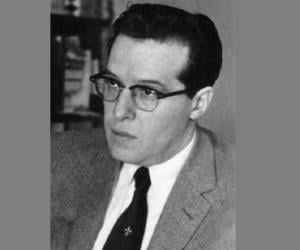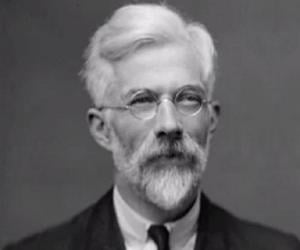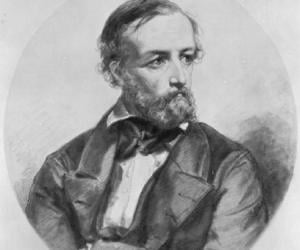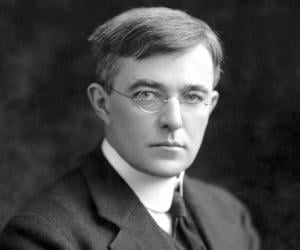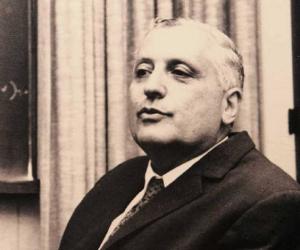An Italian astronomer, engineer, and physicist, Galileo Galilei is widely regarded as the father of observational astronomy, the father of the scientific method, the father of modern physics, and the father of modern science. He is credited with popularizing the telescope, which changed the course of history.
German mathematician David Hilbert was first drawn to math inspired by his mother, who was a budding math enthusiast. He contributed to a host of concepts, theories, and postulates, such as Hilbert space, Hilbert's program, and Hilbert's problems. He died in oblivion, with a handful of people at his funeral.
Robert Boyle was an Anglo-Irish chemist, natural philosopher, inventor, and physicist. Regarded as the first modern chemist, Boyle is often counted among the founders of modern chemistry. One of the pioneers of the scientific method, Robert Boyle is also remembered for his books, including The Sceptical Chymist, which is viewed as a keystone book in chemistry.
English mathematician G. H. Hardy is best recognised for his work and achievements in number theory and mathematical analysis, and also as mentor of distinguished Indian mathematician Srinivasa Ramanujan. He is noted for his essay on mathematics titled A Mathematician's Apology. He also made his mark in biology formulating a basic principle of population genetics called Hardy–Weinberg principle.
John Napier was a Scottish mathematician, astronomer, and physicist. He is credited with introducing logarithms as a means of simplifying calculations. He also invented Napier's bones, a manually-operated calculating device. In addition to his interest in mathematics, John Napier was also known for his skills as a magician; it is said that he dabbled in necromancy and alchemy.
Joseph Louis Lagrange was an Italian mathematician and astronomer who made significant contributions to the fields of number theory, analysis, and both classical and celestial mechanics. He served as the director of mathematics at the Prussian Academy of Sciences in Berlin for over 20 years. He later moved to France and became a member of the French Academy of Sciences.
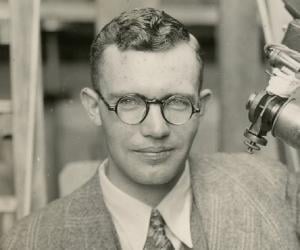
Though he wasn’t formally educated in astronomy, Clyde Tombaugh was immensely interested in the subject since childhood and had built his own telescope after high school. He grew up to discover Pluto, then regarded as the ninth planet but later declared a "dwarf planet," and many other celestial bodies.
Widely regarded as one of the most influential personalities in the history of mankind, Charles Darwin was an English biologist, naturalist, and geologist. He is credited with publishing the Theory of Evolution, which explains the evolution of life from a unicellular organism to human beings. A prolific writer, Charles Darwin also wrote important books on plants and barnacles.
Nobel Prize-winning Japanese immunologist Tasuku Honjo is known identifying the programmed cell death protein 1 and for revolutionizing cancer immunotherapy. Initially part of the University of Tokyo's faculty of medicine, he later taught genetics, immunology, and medical chemistry at several institutes. He was a foreign associate of the U.S. National Academy of Sciences.
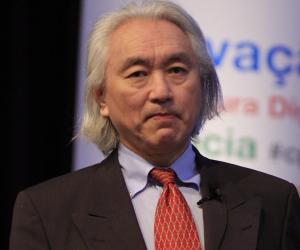
Apart from teaching at the City College of New York, theoretical physicist Michio Kaku also often pens his thoughts in blogs and has written several bestselling books, such as The God Equation. His research is focused on the string theory. He also believes in the existence of aliens.
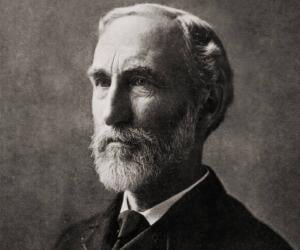
Josiah Willard Gibbs was an American scientist best remembered for making major theoretical contributions to mathematics, physics, and chemistry. As a mathematician, Gibbs is credited with inventing modern vector calculus. In 1901, he was honored with the prestigious Copley Medal for his contributions. Josiah Willard Gibbs's work had a major influence on physicists like J. D. van der Waals.
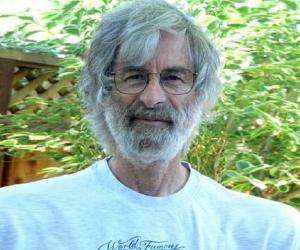
American physicist, inventor and Nobel laureate William Bradford Shockley Jr received the Nobel Prize in Physics with John Bardeen and Walter Brattain in 1956 for their researches on semiconductors and for discovering the transistor effect while working at the Bell Labs. He later became a proponent of eugenics while serving as a professor of electrical engineering at Stanford University.
Nobel Prize-winning Russian physicist Lev Landau is remembered for his pathbreaking research in quantum mechanics. A math prodigy, he had learned calculus at 13. He failed to receive his Nobel in person due to a near-fatal car crash which caused him injuries that eventually caused his death 6 years later.
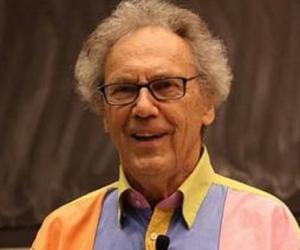
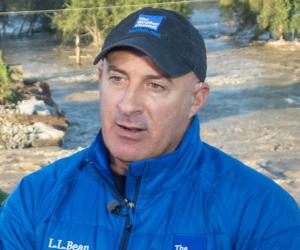
Ernst Haeckel had initially practiced medicine before he gained an interest in Charles Darwin’s theory and began exploring zoology and related fields. He not only coined terms such as ecology, but also named numerous species and created a genealogical tree. He drew numerous figures of animals and sea creatures, too.
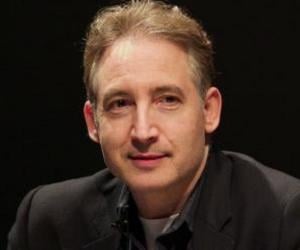
American theoretical physicist, mathematician, and string theorist Brian Greene is noted for popularising string theory through his books like The Elegant Universe, and The Fabric of the Cosmos and related PBS television specials. Greene taught as professor of physics at Cornell University, and presently serves as a professor at Columbia University. He is the co-founder and chairman of the World Science Festival.
The first woman to command the International Space Station, NASA astronaut Peggy Whitson was born to farmers and decided to become an astronaut after watching the moon landing on TV. She also boasts of a PhD in biochemistry and has been a researcher and educator of biochemistry and genetic engineering.
Andre Marie Ampere was a French physicist and mathematician. He is best known for being one of the founders of the science of classical electromagnetism. He was a professor at the École Polytechnique and the Collège de France and a member of the French Academy of Sciences. The base SI unit of electric current, the ampere, is named after him.
Daniel Bernoulli was a Swiss physicist and mathematician. Born into the popular Bernoulli family of mathematicians, Daniel Bernoulli is renowned for his applications of mathematical equations to mechanics. He is also remembered for his pioneering work in statistics and probability. In 2002, he was inducted into the International Air & Space Hall of Fame.
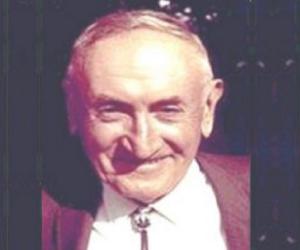
Born to a businessman and diplomat father in Bulgaria, Fritz Zwicky was initially sent to Switzerland to study commerce but ended up deviating to math and physics. He then moved to the U.S. to work with Caltech and gained fame for his research on what he called the supernova.
Ray Kurzweil is an American futurist and inventor best known for his work in fields like optical character recognition, speech recognition technology, and text-to-speech synthesis. A proponent of life extension technologies and robotics, Kurzweil was honored with the National Medal of Technology and Innovation in 1999. In 2002, he was inducted into the National Inventors Hall of Fame.
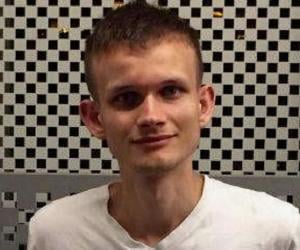
Alfred North Whitehead was a British mathematician and philosopher, best known for his collaboration with his student Bertrand Russell on Principal of Mathematics, a three-volume work on the foundations of mathematics. Also known for his pioneering works on process philosophy and metaphysics, he is credited with developing a comprehensive metaphysical system that differs from most Western philosophies.
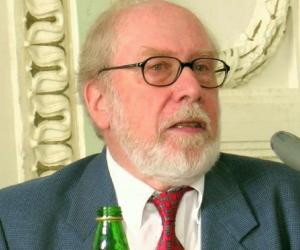
Turing Award-winning Swiss computer scientist Niklaus Wirth revolutionized information technology with his invention of computer languages such as ALGOL-W, PASCAL, and MODULA. He has also taught at Stanford and ETH Zürich and penned a number of books on algorithms and data structures. He has also popularized Wirth's law.
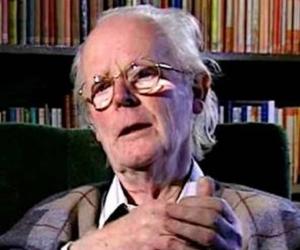
One of the most influential evolutionary biologists of his generation, John Maynard Smith was originally aeronautical engineer. Later, he took a second degree in genetics and did extensive research on subjects like population genetics and evolution of sex. Known for formalizing the central concept in evolutionary game theory, he introduced the evolutionarily stable strategy, impacting a wide variety of studies.
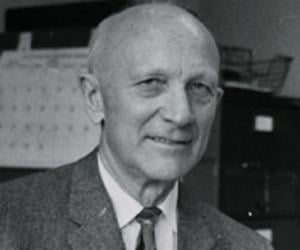
Neuroscientist Wilder Penfield redefined medical science with his innovative way of treating epilepsy patients through surgery. He would note down his patients’ responses when they would be conscious under local anesthesia. He also founded the Montreal Neurological Institute, but was unable to cure his sister’s brain cancer.
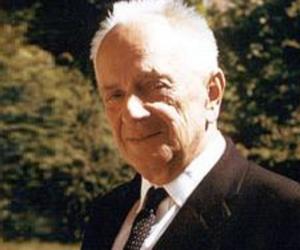
Theodosius Dobzhansky was a Ukrainian-American geneticist and evolutionary biologist. He played a key role in shaping modern synthesis in the field of evolutionary biology. His 1937 book, Genetics and the Origin of Species, is a seminal work on modern synthesis. He was the recipient of several awards, including the US National Medal of Science and the Franklin Medal.
Physicist Leó Szilárd, one of the "Martians," or eminent scientists who had migrated from Hungary to the U.S., was the first to initiate a controlled nuclear chain reaction and was closely associated with the Manhattan Project, meant to develop the atomic bomb. He later advocated for responsible use of nuclear powers.
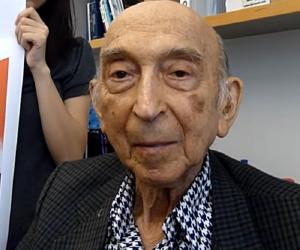
Austrian physicist and philosopher Ernst Mach is remembered for his contributions to the study of shock waves. He is also credited for discovering a non-acoustic function of the inner ear that helps control human balance. As a philosopher of science, he is considered a major influence on logical positivism and American pragmatism.
Abdus Salam was a Pakistani theoretical physicist who became the first Pakistani to be honored with the Nobel Prize in Physics. He was also the second person from an Islamic country to receive any Nobel Prize. He won the award in 1979 for his work concerning the electroweak unification theory. Salam played a major role in popularizing physics in Pakistan.
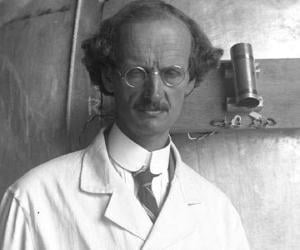
Swiss-born Belgian physicist Auguste Piccard is best remembered for his research on the Earth’s upper stratosphere. He designed his own ships to explore the depth of the seas and also built balloons to study cosmic rays. His bathyscaphe remains one of his best-known inventions. He also co-discovered the magnetocaloric effect.
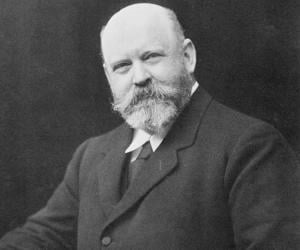
Walter Rothschild, 2nd Baron Rothschild was a British soldier, politician, zoologist, and banker. He is best remembered for his service as the president of the largest Jewish communal organization in the UK, the Board of Deputies of British Jews, between 1925 and 1926. Walter Rothschild also made immense contributions to the field of zoology.
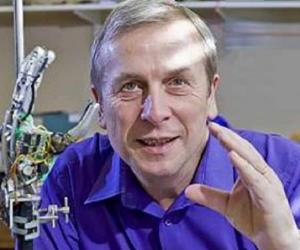
A professor at the Coventry and Reading universities, engineer Kevin Warwicke specializes in artificial intelligence, robotics, and biomedical engineering. One of his most interesting research interests is the possibility of creating cyborgs, which has earned him the nickname Captain Cyborg. He has been awarded honorary doctorates from several universities.
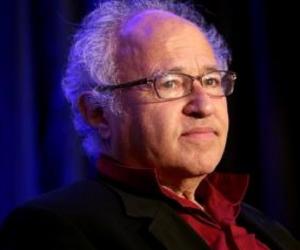
Eminent scholar David D. Friedman has excelled in a wide range of academic areas, including economics, physics, law, and business. The Harvard alumnus is best known for his anarcho-capitalist theories and the book The Machinery of Freedom but has penned countless other books, too, including two science-fiction fantasy novels.
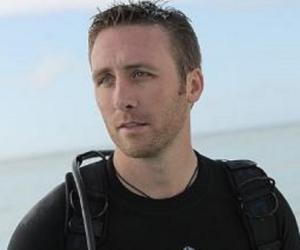
Known for the documentary Ocean's Deadliest, which he co-hosted with Steve Irwin, oceanographer Philippe Cousteau Jr. also earned an Emmy nomination for his work in Awesome Planet. The grandson of naval officer Jacques-Yves Cousteau, Philippe had lost his father, sailor and filmmaker Philippe Cousteau, 6 months before his birth.
Ronald Fisher was a British polymath, statistician, geneticist, mathematician, and academic. He is credited to have single-handedly created the foundations for modern statistical science. He made important contributions to the field of genetics and is known as one of the three principal founders of population genetics. He was elected to the Royal Society in 1929.
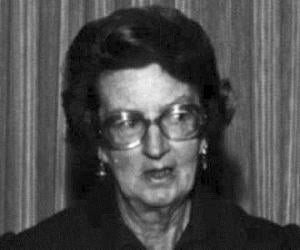
British paleoanthropologist Mary Leakey had exhibited her interest in drawing and archaeology as a kid. Most of her career was spent working alongside her husband, Louis Leakey. She was in charge of many excavation projects in Kenya. Her discoveries include the first Proconsul skull fossil and 15 new animal species.
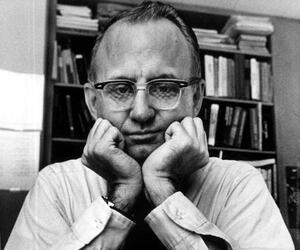
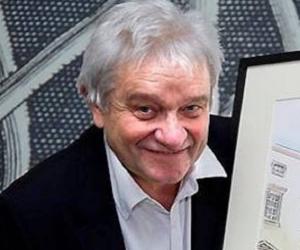
German mathematician Peter Gustav Lejeune Dirichlet is remembered for his invaluable contribution to number theory. He pioneered the concept of a function, expressed through the equation y = f (x). Though his parents wanted him to become a merchant, his mastery of math made them change their minds.
Irving Langmuir was an American physicist, chemist, and engineer. He is credited with popularizing the concentric theory of atomic structure. Irving Langmuir is also credited with inventing the hydrogen welding technique and the gas-filled incandescent lamp. In 1932, Langmuir won the Nobel Prize in Chemistry for his contribution to surface chemistry. He also won other prestigious awards like Faraday Medal.
Ilya Prigogine was a physical chemist remembered for his work on irreversibility, complex systems, and dissipative structures. A respected member of several scientific organizations, Prigogine was honored with the Francqui Prize in 1955. In 1976, he won the Rumford Medal for his work concerning irreversible thermodynamics. His work on irreversible thermodynamics earned him the Nobel Prize in Chemistry in 1977.
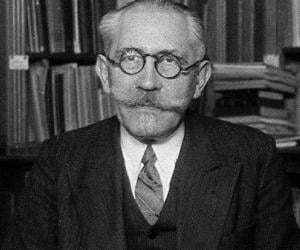
Best known for developing the Langevin dynamics and the Langevin equation, physicist Paul Langevin was also a staunch Communist. Having worked on his doctoral thesis under Pierre Curie, he had formed a connection with Curie’s wife, Marie Curie, which developed into a full-blown love affair after Pierre’s death.
